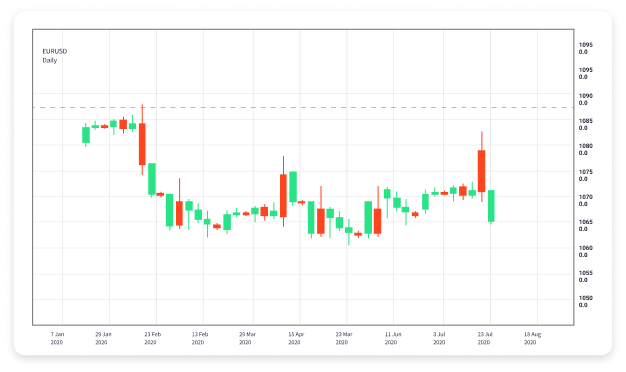Mastering Scalping A Comprehensive Guide to Forex Trading
Scalping is a popular trading strategy in the Forex market that allows traders to capitalize on small price movements. This method involves making a large number of trades over a short period, aiming to exploit inefficiencies and fluctuations in currency prices. As a scalper, your goal is to book profits quickly and efficiently. To understand […]

Scalping is a popular trading strategy in the Forex market that allows traders to capitalize on small price movements. This method involves making a large number of trades over a short period, aiming to exploit inefficiencies and fluctuations in currency prices. As a scalper, your goal is to book profits quickly and efficiently. To understand the art of scalping, it’s essential to grasp the fundamentals, strategies, and tools involved. scalp trading forex Philippine Trading Platforms can provide access to various tools for successful scalping.
What is Scalping in Forex?
Scalping is a trading technique where traders look to make a profit from minor price changes in currency pairs. By entering and exiting trades rapidly, often within minutes or even seconds, scalpers aim to accumulate small profits that can add up over time. This approach requires a solid understanding of market dynamics, as well as the ability to make quick decisions based on live data.
Characteristics of Scalping
- High Frequency of Trades: Scalpers typically execute numerous trades in a day, often targeting high volumes to make considerable profits.
- Short Holding Period: Positions are held for a very short time, usually just a few minutes.
- Focus on Major Currency Pairs: Scalpers generally trade highly liquid currency pairs like EUR/USD, USD/JPY, and GBP/USD to ensure easy entry and exit from trades.
- Technical Analysis: Scalping relies heavily on technical indicators and price action rather than fundamental analysis, which is more suited for longer-term trading strategies.
Scalping Strategies
Successful scalping requires a well-defined strategy. Here are some popular scalping strategies that traders can utilize:
1. The 1-Minute Scalping Strategy
This strategy is based on chart analysis with a one-minute time frame. Traders utilize short-term indicators such as Moving Averages (MA) and Bollinger Bands to identify entry and exit points. The idea is to capture quick price movements within a single minute.
2. Range Trading

Range trading involves identifying support and resistance levels. Scalpers buy at the support level and sell at the resistance level. This strategy works well in a sideways market where prices oscillate between these two points.
3. Momentum Scalping
In this strategy, traders look for strong trends and enter positions that align with momentum. This might involve using indicators like the Relative Strength Index (RSI) to identify overbought or oversold conditions and capitalizing on rapid price movements in the direction of the trend.
Essential Tools for Scalping
For effective scalping, traders must equip themselves with the right tools. Here are a few essential instruments to consider:
- Trading Platform: Choose a reliable trading platform that provides quick execution times, as speed is crucial in scalping. Popular platforms include MetaTrader 4 and MetaTrader 5.
- Charting Software: Utilize advanced charting tools to analyze price movements. Real-time data and precise indicators can make a significant difference.
- Economic Calendar: Although scalping predominantly relies on technical analysis, it’s essential to be aware of economic events that can lead to volatility in currency pairs.
Risk Management in Scalping
Effective risk management is crucial in scalping, given the high number of trades executed and the quick decision-making required. Here are some key risk management techniques:
1. Set Stop-Loss Orders

Always use stop-loss orders to limit potential losses. Determine a maximum loss amount per trade to protect your capital.
2. Keep Leverage in Check
While leverage can amplify profits, it can also magnify losses. Use conservative leverage ratios to manage your risk effectively.
3. Practice Proper Position Sizing
Calculate the appropriate position size based on your account balance and risk tolerance. This helps manage the impact of losing trades on your overall capital.
Psychological Aspects of Scalping
Scalping can be incredibly demanding on a trader’s psychology. The fast-paced nature of the method requires discipline, focus, and emotional control. Here are some psychological tips to consider:
- Stay Disciplined: Stick to your trading plan and avoid impulsive decisions based on emotion.
- Accept Losses: Understand that losses are a part of trading. Accepting losses without emotional turmoil is key to long-term success.
- Maintain Focus: Stay sharp and alert while trading, as missing out on opportunities or making mistakes can lead to significant losses.
Conclusion
Scalp trading in Forex can be rewarding but requires a solid understanding of strategies, risk management, and psychological resilience. As traders seek to take advantage of small price movements, utilizing the right tools and maintaining discipline will significantly enhance their chances of success. Whether you’re just starting or looking to refine your scalping skills, consistent practice and dedication are essential for mastering this trading technique.







 EN
EN